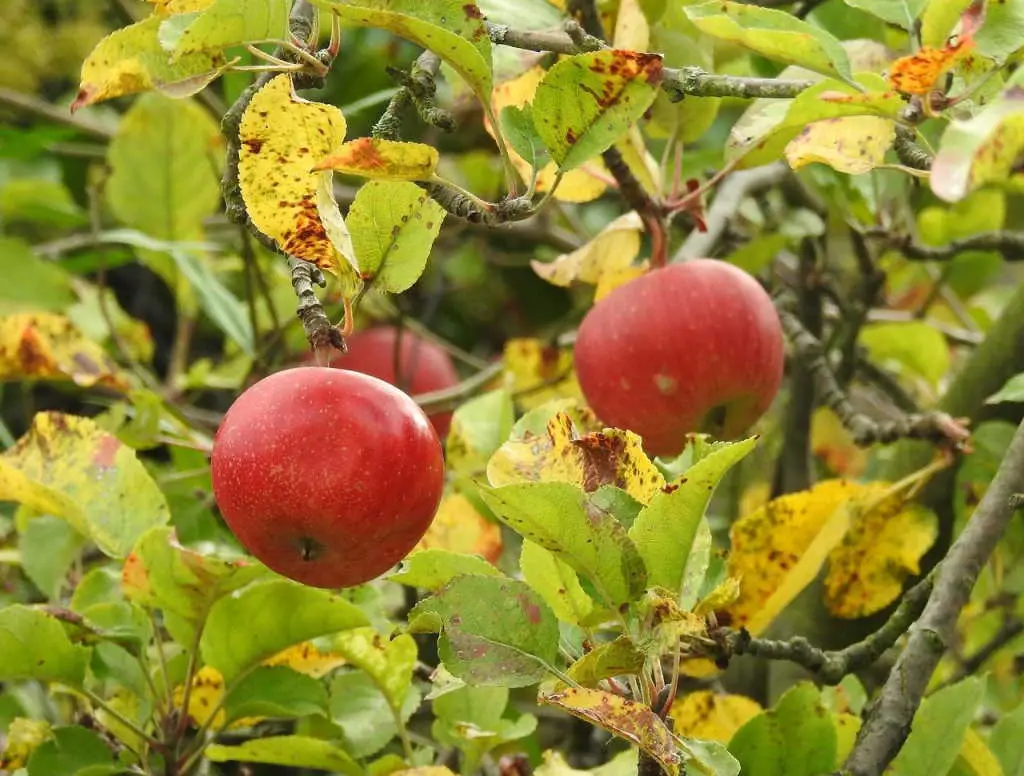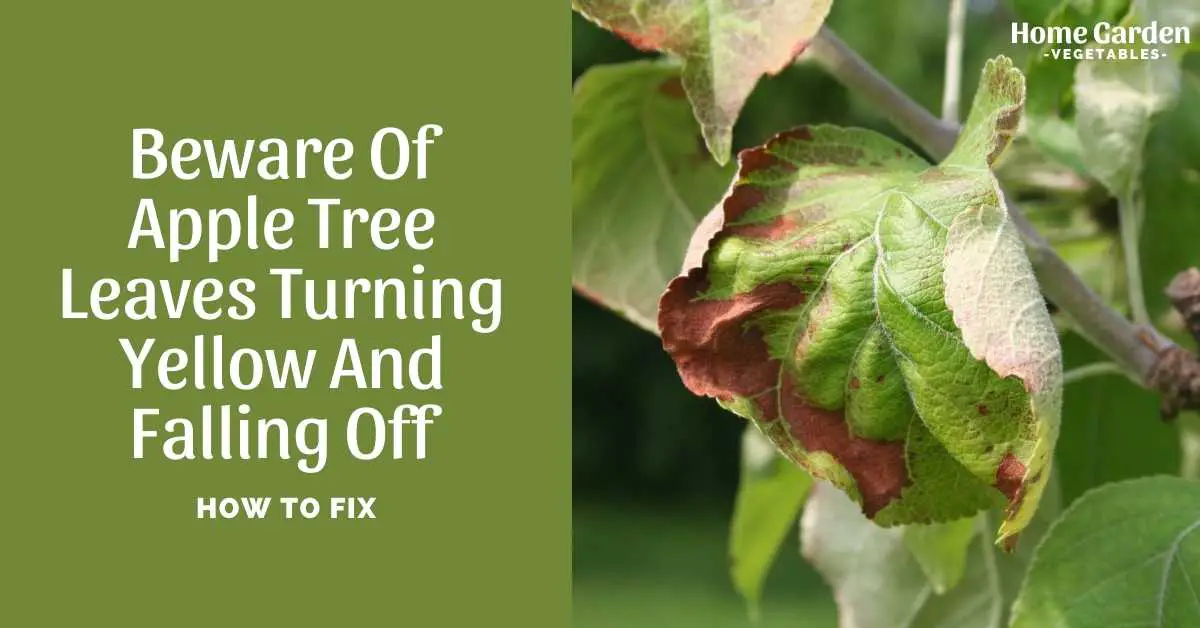Your apple tree leaves turning yellow and falling off, and it’s not autumn! So what’s causing it, and how do you fix it? If your apple tree isn’t looking its best and you’re worried the next harvest might suffer, this post will help you out. Continue reading, and you’ll learn all about the possible problems your apple tree might be experiencing and how to fix them.
Typically, an apple tree will have green, glossy leaves. If they’re turning yellow, it could mean several things – a change in weather, too much or too little water, a nutrient deficiency, or a disease.
Reader Poll: What online courses would interest you?
Stop Apple Tree Leaves Turning Yellow And Falling Off
So what are the possible causes and what are the solutions, let’s take a look.

Weather Changes
Apple trees are deciduous. As the cold season arrives, apple tree leaves turning yellow falling off is a usual phenomenon. The tree will withhold the water and nutrients travelling to the leaves to prepare for its winter dormancy period.
Without adequate nutrients and water, photosynthesis won’t be carried out as effectively, and the amount of chlorophyll will drop. In the absence of chlorophyll, which gives the plants their green color, leaves will turn yellow. Without nutrients, they’ll eventually fall off.
Subscribe to our newsletter!
What Does It Look Like

You’re probably familiar with this type of yellowing since you see it every year. Right after the fruits mature, the leaves start turning yellow and brown. By the beginning of winters, the tree will lose all its leaves.
Solution
It’s part of the natural tree cycle, so no fix is necessary. Let your tree rest for the winters, until it’s ready with restored vigor by springtime. You’ll find new leaves and tiny buds on the branches by March.
Lack Of Water
Both, too much and too little water can upset your apple tree. If the apple tree isn’t getting enough water to cover its needs, drought stress will result. Drought stress will cause apple tree leaves turning yellow falling off. It will also increase fruit drop. Young apple trees and those on dwarf rootstocks (M.27 and M.9) have shallower roots, making them less tolerant to drought.
What Does It Look Like
If the tree is deprived of water, it will give a clear sign. Unseasonal yellowing of leaves, when all the other trees are fresh and green will tell you that your tree needs a drink.
Solution
So what are the solutions? Water the tree as soon as you notice the signs. Apple trees need an inch of water each week, which is normally covered by rainfall. If there hasn’t been any rain lately, don’t forget to water it.
Excess water
Overwatering is even more detrimental for your apple tree. In waterlogged soil, roots are less capable of absorbing nutrients, the leaves will turn yellow, and eventually, the roots will start dying.
What Does It Look Like
So unsuitable watering turns the leaves yellow. How will you tell if it’s underwatering or overwatering that’s bothering your tree? If your tree is getting more moisture than it should, yellowing starts on the lower foliage and then moves up. Initially, the leaves on the inside of the tree crown will turn yellow, with the discoloration spreading outwards as the problem progresses.
Solution
Make sure you plant your tree at a well-drained location to start with. This problem is common in poorly drained soils. Apple trees planted in heavy soil will need water less often than those in well-drained soil. Cut down watering if you notice the problem; let the top few inches of soil dry out before the next watering.
Nutrient Deficiencies
So if it’s not the weather, and the tree is receiving optimal watering, what are the possible causes of yellowing leaves? Deficiencies of certain nutrients can also cause the leave to turn yellow, wilt and fall off.
If minerals like zinc, manganese, copper, sulphur or magnesium lack in the soil, it could result in the leaves turning yellow. Yellowing leaves will result in reduced photosynthesis, and the trees won’t be able to produce enough energy for fruit development.
What Does It Look Like
Iron deficiency starts with yellowing near the leaf veins. As it progresses the entire leaves turn yellow, with bright green veins. The symptoms begin on the new growth and spread throughout the tree. Manganese deficiency will produce similar symptoms, with yellow leaves and green veins.
Solution
So, what are the solutions? A soil test will tell you exactly which nutrients are lacking. Once you know which nutrients are missing, you’ll need to apply amendments to the soil to cope with the deficiency.
Diseases
If you’re still wondering what are the possible causes of chlorosis on an apple tree, certain diseases can also be responsible.
Here’s a list of some diseases associated with yellowing and falling leaves on apple trees:
Necrotic Leaf Blotch
It’s a common disease that attacks Golden Delicious apples. This disorder starts with brown blotches / spots on leaves, followed by yellowing and dropping. Fungicides that include zinc ions can prove effective against the problem.
Apple Scab
It’s a fungal disease that appears on both the fruit and the leaves. It results in pale yellow spots on the upper side of the leaves and darker brown spots on the lower side. Similar symptoms appear on the fruit. So what are the solutions? Choose resistant varieties, to begin with. Once the disease appears, you can apply liquid copper fungicide every 7 to 10 days until the apple tree is revived.
Pest Infestations
Pests, like aphids, can also weaken the tree and cause its leaves to become yellow. Rosy apple aphid is the most common pest that can attack apple trees, and cause leaf yellowing and curling. Apply insecticidal sprays to get rid of them.
Conclusion
So you see, apple tree leaves turning yellow falling off can be caused by quite a number of problems. It’s crucial to get to the root cause and solve it before it takes a toll on your apples.

